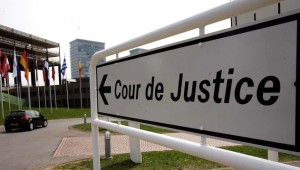A lot has been published and broadcast about Internet users’ “right to be forgotten,” long before and since last week’s ruling by a high court in Europe (see the BBC), including the important points that…
- Scratching the surface. Suing a search engine to take down links to offending content doesn’t mean the content itself gets taken down
 Who decides? A court has made search engines, of all things, “judge and jury in deciding what gets removed and what is in the public interest and therefore remains [in search results]” (these two points, thanks to Stephen Balkam of the Family Online Safety Institute in the Huffington Post)
Who decides? A court has made search engines, of all things, “judge and jury in deciding what gets removed and what is in the public interest and therefore remains [in search results]” (these two points, thanks to Stephen Balkam of the Family Online Safety Institute in the Huffington Post)- Erasing history? What one person wants expunged from public record is sometimes something other people or institutions feel should be in the public record. Internet policy scholar Adam Thierer at George Mason University told Tech News World that the European court’s ruling “opens the door to a new censorship regime” disguised as privacy protection.
- A blunt instrument. “How an individual’s reputation is protected online is too important and subtle a policy matter to be legislated by a high court” (the above and this point also made by Harvard University law and computer science professor Jonathan Zittrain in the New York Times)
- “Right” is wrong. It’s not really a right to be forgotten, according to Netherlander Joris van Hoboken, among 8 other fascinating reasons for why the “right” is wrong in his 2011 PhD dissertation. That phrase really overstates the basic data protection principle this is about – “purpose limitation” (keeping data uploaded for one purpose from spreading to another, e.g., not having a private email turned into a status update to all your friends) – and turns it into an emotionally charged issue of reputation and second chances focused on what turns up in search engine results (this reminds me of, in the last decade, state attorneys general prescribing technology as the solution to a different perceived social problem – and prescribing before there was a diagnosis).
What policymakers have to understand
But there’s one final, very crucial point in all this that isn’t prominent enough in the public discussion: the nature of the “content” we’re all talking about.
It seems policymakers and courts are making laws and decisions about what content was, not is. They’re talking about content as if it’s in a digitized book or magazine, content of the mass media environment of their childhoods or even the Web of the 1990s, when people were interacting with content more than each other. They seem to think of content as something created and published by a single individual or entity – something that’s static or finished rather than ongoing, posted, updated, changed, remixed, etc. in real time. What’s linked to in a search engine is a freeze frame of a moment in time, very often a moment experienced and owned by more than one participant. How can anyone set good and just policy on “content” – much less its producers – until he or she fully understands it?
Related links
- “OSTWG report: Why a ‘living Internet’?”, when I first posted about content as a “living thing” – when a task force I was honored to co-chair released its report to Congress in 2010.
- Examples of how legislation aimed at protecting children’s privacy is just as likely to jeopardize it: “Flawed early laws of our new media environment”
- Zooming in on some unintended consequences of the US’s Children’s Online Privacy Protection Act: “The ‘minimum age’ and other unintended consequences of COPPA”; “COPPA has likely increased minors’ risk: Study”; and the good news in a 2011 study: “Kids lying to Facebook, not their parents”
- “Aggregated extortion, digital footprints’ dark side & second chances”

Leave a Reply